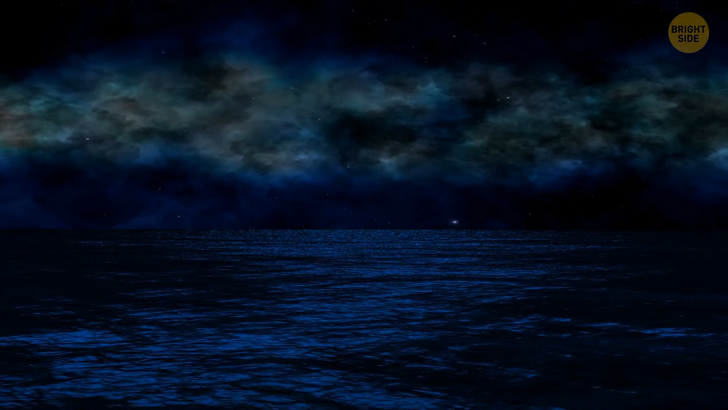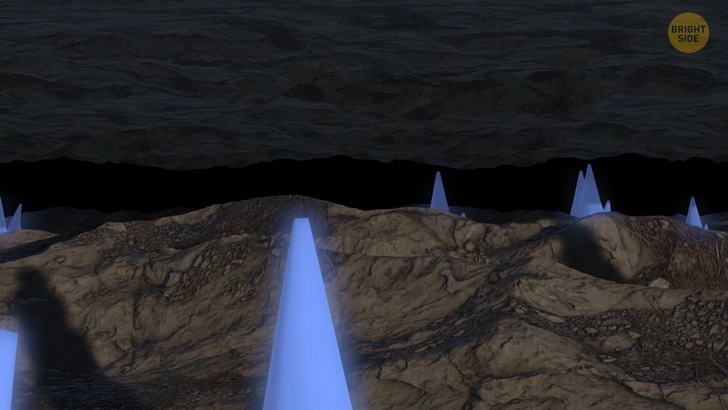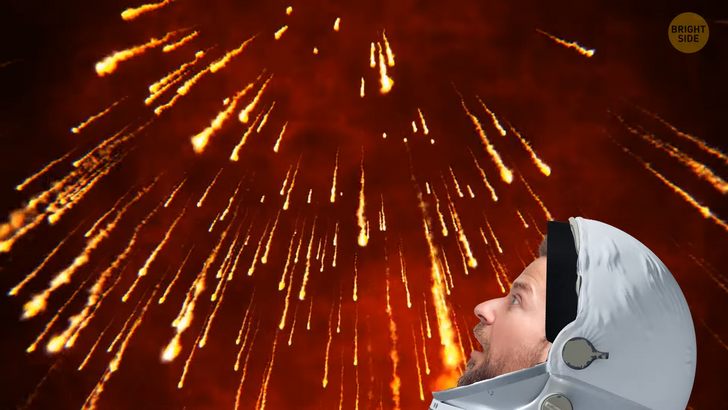Helen Hunt, 60, Stuns During Her Latest Appearance, and Her Lips Become the Center of Attention

Imagine a world where instead of water, the oceans are made of methane. Yes, that’s right — instead of swimming in H2O, you’d be paddling around in CH4. It’s like Mother Nature’s version of a fizzy drink! Such oceans actually exist on one of Saturn’s moons, called Titan.
In fact, the methane and ethane on Titan play a similar role to the water on Earth: they cycle through the atmosphere and form clouds that eventually rain down onto the surface. They were discovered by the Cassini-Huygens space probe. And apparently, our entire planet’s oil reserves could fit in one of Titan’s puddles!
Even the desert sand dunes on Titan have more organics than all of Earth’s coal reserves. Who knew that Titan was the place to go if you’re ever in need of fuel for your car? Now, obviously, there are some things that distinguish methane lakes from our water ones.

First, the temperature on Titan is around −290°F. It’s like taking a dip in a giant glass of liquid nitrogen. Not exactly ideal for a beach day, is it? Methane is also less dense than water. So if you were to go swimming in such an ocean, you’d float like a balloon. On the bright side, it would make doing the backstroke a lot easier!
Next, while water waves can be pretty majestic, unfortunately, we can’t ride any on Titan. Cassini didn’t detect any big waves there. Maybe it’s due to low seasonal winds or the fact that some of the lakes are much smaller than Earth’s lakes, but we don’t know for sure. Also, I know what you’re thinking — if the oceans are made of methane, could you set them on fire? Technically, yes! Methane is a highly flammable gas, so if you were to light a match in a methane ocean, you’d get a pretty impressive (but dangerous) blaze.
So, given all these differences, the question arises — what would a planet with such oceans look like? Well, we can make some guesses by looking at Titan. First of all, its atmosphere, composed primarily of methane, would be incredibly thick. Titan’s atmosphere reaches nearly 370 miles into space! And the atmospheric pressure there is 60% greater than Earth’s!
So if you ever wanted to experience the feeling of swimming super deep in the ocean, now’s your chance. Also, methane is a powerful greenhouse gas that traps the Sun’s heat really well. That’s why our planet would warm up faster than a sauna. You may ask, why is it so cold on Titan then? This is because this moon is very far from the Sun, and light doesn’t reach it well. But if we place our planet somewhere in the middle, then the temperature may even be quite comfortable.

Actually, methane oceans on a planet could really spice up the climate! The planet would be a breeding ground for methane clouds. Just like on Titan, it could form an orange-colored haze, or smog, that would make our planet look like a real mystery. It would be difficult to see us from space without some special telescopes. And let’s not forget about methane storms!
They would also occasionally drench the surface. So remember to bring your umbrella! But hey, at least the heavy, carbon-rich compounds would make for some pretty sweet dune fields. And finally, the most important difference. While water oceans on Earth are teeming with all sorts of creatures, we’re not sure if there’s any life in methane oceans on Titan. If there is, they’d have to be pretty tough to survive in such extreme conditions.
So, if life on such a planet exists, it would be very different from what we’re used to seeing on Earth. For example, microbes might be able to handle it. These tiny resilient creatures can survive in a wide range of environments, including extreme ones. So, it’s possible that microbial life could exist in methane oceans. And what about us and animals?
Well, scientist Robert Zubrin thinks that Titan might be the perfect place for humans to colonize in our solar system. According to him, this little moon has everything we need to survive and thrive. And if it’s possible on that moon, then it could work with a planet too! For starters, we’d need some oxygen to breathe. We could use nitrogen and methane in the atmosphere to create breathable air and rocket fuel. We could also use these elements to make some fertilizers and grow plants!

Next up, we’d need water. Since the oceans are made of methane, we can’t exactly drink them. We’d need to find or create sources of water. Scientists believe that it actually may be hidden below the surface on Titan, together with some ammonia. We could use it to drink, or create even more oxygen. So, with all these resources, we could create a self-sustaining colony even in a place with methane oceans. Piece of cake.
Although there are always alternatives. Maybe we could become “methane breathers” — evolve into organisms that use methane instead of oxygen. For example, we could get some large lungs because we’d have to inhale a much larger volume of air, since methane is less dense than oxygen. But this is pure sci-fi.
Methane oceans are not the only unusual oceans in space. It turns out that seas on diamond planets may be even weirder. Take WASP-12b, for example. This exoplanet located about 1,200 light years away might have oceans of tar. That’s right, tar. The planet has more carbon than oxygen, which means its crust is probably made of things like diamond and graphite instead of your average silica-based minerals like granite.
Imagine stepping on this planet, and the first thing you notice is that the beaches are made up of black goo. It’s like stepping into a nightmare where you are trapped in quicksand made of sticky sludge! So, forget about the sandy beaches and crystal-clear water you’re used to. Here, you’ll be living the “pitch” life. Your swimwear will be replaced with hazmat suits, and you’ll need a sturdy pair of boots to walk on the sticky surface.

But in reality, WASP-12b is not the place to look for geology of any kind. It’s simply too hot for anything to survive, let alone thrive. But there might be smaller, similar exoplanets where we could potentially live. Now, you might be thinking, “Tar oceans? That’s crazy talk!” But did you know that there’s a 246 feet deep lake of natural asphalt here, on Earth? It’s called Pitch Lake, and it’s located in Trinidad. It’s formed when oil is forced to the surface, and the lighter components evaporate, leaving the thicker, heavier pitch behind.
And guess what? This lake is home to a thriving ecosystem of microbes! So if you wanna live on such a planet, at least you won’t be alone. You’ll have plenty of company in bacteria, fungi that love to feast on carbon found in asphalt, and archaea that live on methane. And finally, there are oceans of molten rock. That’s right! Imagine a world where “the floor is lava” isn’t just a game, but a reality.
Welcome to 55 Cancri e, a planet so hot that the entire hemisphere facing its star is covered in magma. It’s like a scene out of a heavy metal album cover! But don’t worry, the other side of the planet is slightly cooler, so you can at least step off the lava and catch your breath. If you’re feeling adventurous, you could always hop over to CoRoT-7b, another super-Earth where the lava ocean is just as scorching. But this time, the night side doesn’t offer much respite either — it’s still seeing constant volcanic eruptions, like some sort of firework show.

Scientists are scratching their heads trying to explain why these planets are so hot and why they haven’t cooled down yet. Maybe they’re just really good at retaining heat, or maybe they just have a bad temperament. Either way, it’s probably best to stick to playing “the floor is lava” on solid ground, and leave the real lava planets to... someone else.
All this diversity of oceans shows us that the universe is always full of surprises. It never ceases to amaze us with its creativity. Although these oceans are not suitable for human exploration (yet), they challenge our understanding of what could exist beyond our world. So let’s continue to explore!











